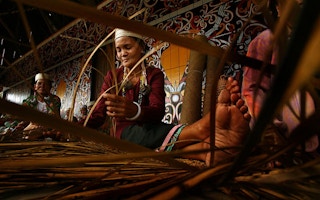Palm oil production in Indonesia often comes at the expense of traditionally managed lands as well as the livelihoods of indigenous communities, causing widespread conflict in the archipelago country. With oil palm cultivation set to double in Indonesia over the next 10 years, methods for understanding and mediating this conflict are becoming more critical.
Currently, when conflicts between large-scale palm oil producers and local communities arise, communities typically lose out.
“The legal system is of little use, and there are far too few NGOs on the ground to cope with all these conflicts,” said Ward Berenschot, a postdoctoral researcher at the Royal Netherlands Institute of Southeast Asian and Caribbean Studies.
But a recent paper in Applied Geography is taking steps towards solving this problem. By mapping the way in which different types of land use conflicts correlate with varying environmental and social variables in Kalimantan, the Indonesian portion of Borneo island, the study aims to gain a better understanding of the causes of conflicts and the characteristics of impacted communities.
This information, the authors hope, can be used to inform land use policy, planning, and management to achieve more sustainable palm oil development.
Conflicts in 187 villages were mapped in Kalimantan using data gathered from online searches and local newspaper reports describing recent palm oil land use disputes.
Forty-eight percent of these villages were found to be strongly opposed to oil palm companies. Such a sentiment, including a perceived negative social and environmental impact from palm oil development, was highly correlated with communities that depend on forest products for their livelihoods. These areas tended to be farther away from current palm oil or timber developments, and therefore more heavily forested and intact.
“
Where communities live in environments and societies not yet exposed to the sector, they are more likely to resist plantations.
Jago Wadley, senior campaigner, Environmental Investigation Agency
According to Jago Wadley, senior campaigner at the Environmental Investigation Agency (EIA), a London-based NGO, this result makes sense.
“Forest dependent communities — mainly indigenous communities — remain in touch with and reliant on the natural capital that will be lost through plantation development,” he said. “They still use and need the timber, forest products, and ecosystem services that forests provide them with. Plantation development for them is a fundamental reengineering of reality, and as such many logically fear and oppose it.”
These fears are often warranted. Communities can lose their independence when they become reliant on the cash-based economy, as well as their communal cultural traditions, hunting lands, and access to free forest products — as well as the sense of grounding and cohesiveness that goes with them. For Kalimantan’s indigenous Dayak peoples, development has caused food insecurity, flooding, polluted waterways, and pest issues.
Different types of conflict prevailed in areas that have already undergone or are undergoing forest transformation to oil palm or timber plantations.
These areas tended to be more readily accessible to development, with more roads, and on fertile lowland areas closer to the coast. In these regions there were more specific conflicts among local communities and palm oil companies, such as land boundary disputes, perceived lack of consultation, illegal actions by the company, and lack of compensation and broken promises to the affected communities.
“Where environments are already degraded, and bear little resemblance to natural habitats, they are more likely to accept palm oil in principle, and be concerned about compensation, how companies treat them, or other factors,” Wadley said. “However where communities live in environments and societies not yet exposed to the sector, they are more likely to resist plantations.”
Studies like this that count and map the number of natural resource-related conflicts in Kalimantan are highly needed and currently lacking in reliable data. “There are simply too few good organizations capable of connecting with affected communities,” Berenschot said.
“Most communities address their conflict on their own, or with their own network. What is greatly missing is a joint, collaborative organisation that takes of these conflicts in a more collective manner.”
This story was published with permission from Mongabay.com. Read the full story.










